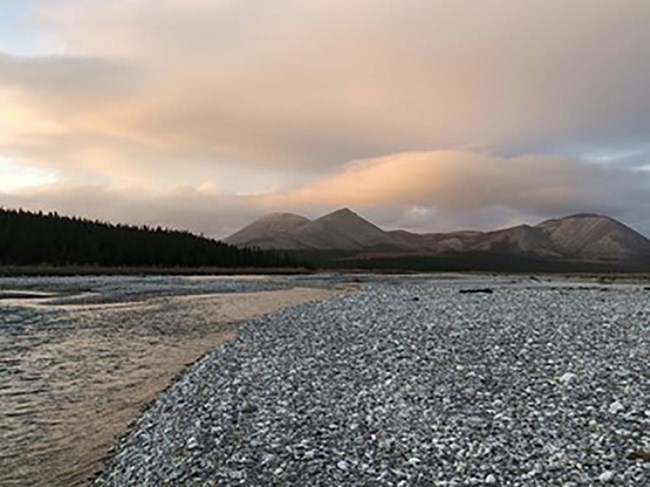Last updated: March 3, 2022
Article
How stream chemistry can be used to understand ecosystems and disturbances in Arctic Alaska

NPS/Jon O’Donnell
Stream and river ecosystems are vulnerable to the effects of climate change and other disturbances in the Arctic. Stream water quality measurements can be used to detect climate-induced shifts in both terrestrial and aquatic ecosystems. For example, long-term monitoring of water quality can be useful for detecting trends in stream carbon or nutrients over time. However, most monitoring takes place at a single location, which makes it challenging to understand what is driving trends in water quality. To address this issue, Arctic scientists have begun repeatedly sampling stream networks at multiple locations within watersheds.
Findings from these efforts are reported in a new publication that summarizes stream water quality data from six Arctic watersheds in northern Alaska, including two watersheds in Noatak National Preserve, one in Kobuk Valley National Park, and three based out of Toolik Field Station on the North Slope. This work is part of a collaborative project funded by the National Science Foundation aimed at using “streams as sensors” of terrestrial change in the Arctic. Using traditional water quality data, the authors calculate a new set of indicators to better understand links between terrestrial and aquatic ecosystems across space and time. These new indicators will help scientists better understand the causes, magnitude, and persistence of disturbance effects on stream water quality under a changing climate.
Multi-year, spatially extensive, watershed-scale synoptic stream chemistry and water quality conditions for six permafrost-underlain Arctic watersheds
Abstract
Repeated sampling of spatially distributed river chemistry can be used to assess the location, scale, and persistence of carbon and nutrient contributions to watershed exports. Here, we provide a comprehensive set of water chemistry measurements and ecohydrological metrics describing the biogeochemical conditions of permafrost-affected Arctic watersheds. These data were collected in watershed-wide synoptic campaigns in six stream networks across northern Alaska. Three watersheds are associated with the Arctic Long-Term Ecological Research site at Toolik Field Station (TFS), which were sampled seasonally each June and August from 2016 to 2018. Three watersheds were associated with the National Park Service (NPS) of Alaska and the U.S. Geological Survey (USGS) and were sampled annually from 2015 to 2019. Extensive water chemistry characterization included carbon species, dissolved nutrients, and major ions. The objective of the sampling designs and data acquisition was to characterize terrestrial–aquatic linkages and processing of material in stream networks. The data allow estimation of novel ecohydrological metrics that describe the dominant location, scale, and overall persistence of ecosystem processes in continuous permafrost. These metrics are (1) subcatchment leverage, (2) variance collapse, and (3) spatial persistence. Raw data are available at the National Park Service Integrated Resource Management Applications portal (O'Donnell et al., 2021, https://doi.org/10.5066/P9SBK2DZ) and within the Environmental Data Initiative (Abbott, 2021, https://doi.org/10.6073/pasta/258a44fb9055163dd4dd4371b9dce945).
Shogren, A. J., J. P. Zarnetske, B. W. Abbott, S. Bratsman, B. Brown, M. P. Carey, R. Fulweber, H. E. Greaves, E. Haines, F. Iannucci, J. C. Koch, A., Medvedeff, J. A. O'Donnell, L. Patch, B. A. Poulin, T. J. Williamson, and W. B. Bowden. 2022. Multi-year, spatially extensive, watershed-scale synoptic stream chemistry and water quality conditions for six permafrost-underlain Arctic watersheds. Earth System Science Data 14(1): 95-116.
